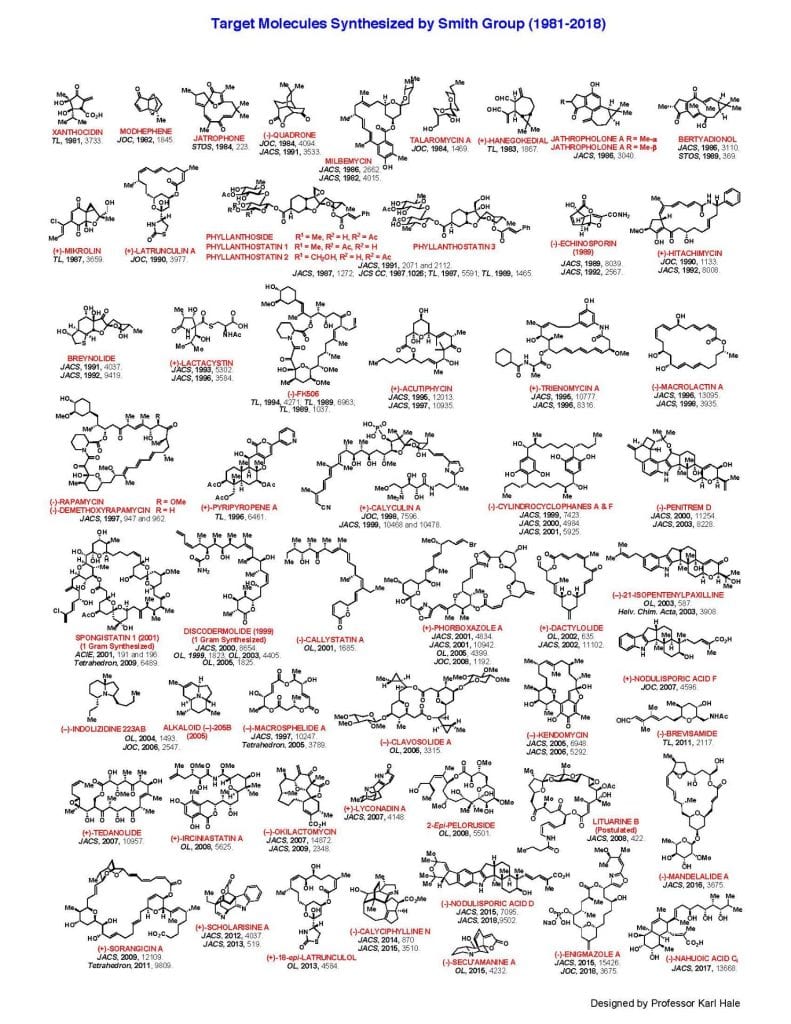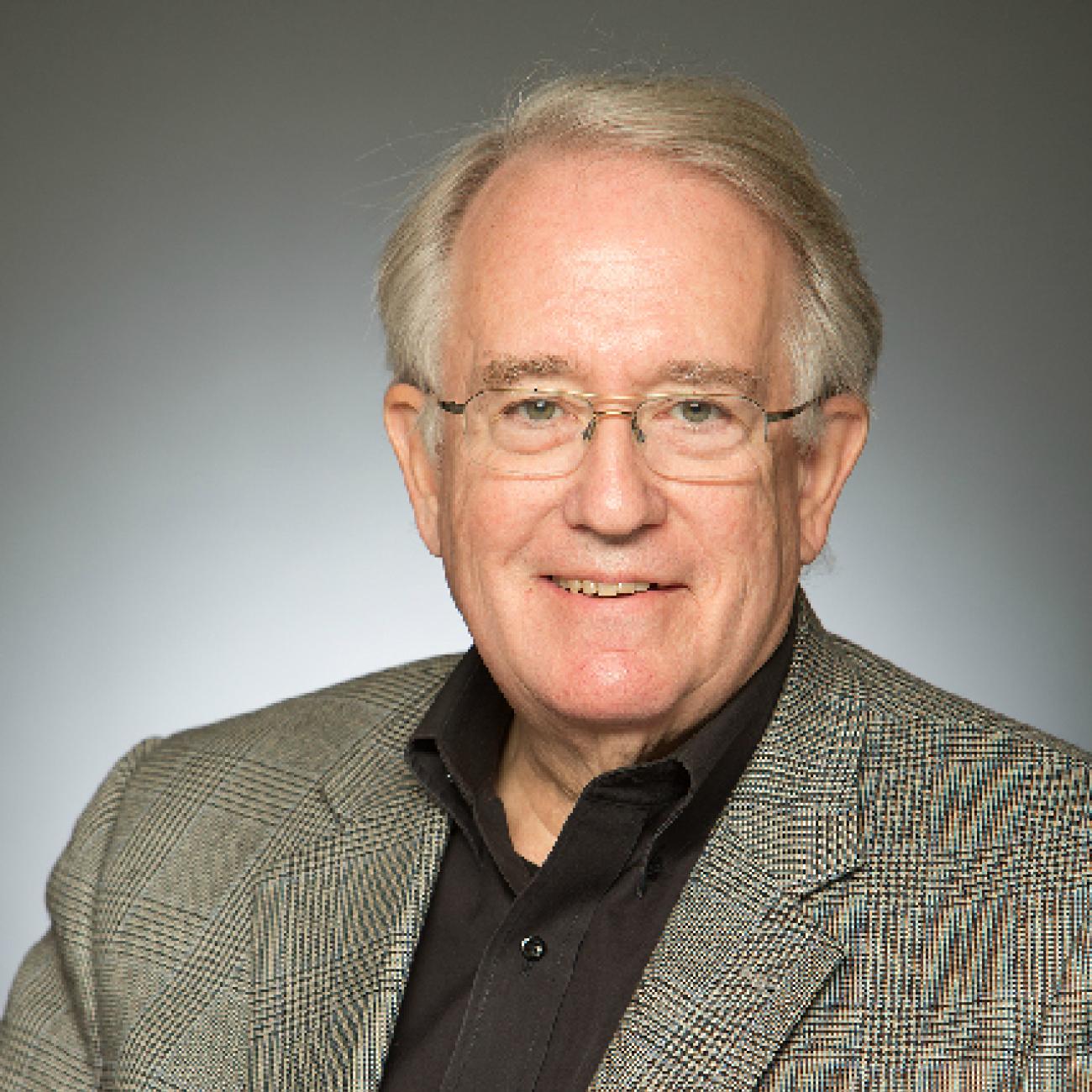Organic Chemistry
- B.S.- M.S. Bucknell University (1966)
- Ph.D. Rockefeller University (1972)
- Associate, Rockefeller University (1972-73)
Honors
- Camille and Henry Dreyfus Teacher-Scholar Award (1978-1983)
- Master of Arts (hon), University of Pennsylvania (1978)
- NIH Career Development Award (National Cancer Institute) (1980-1985)
- Fellow, The John Simon Guggenheim Foundation (1985-1986)
- Fellow, Japan Society for the Promotion of Science (1986-1987)
- Philadelphia Section Award of the American Chemical Society (1986)
- Philadelphia Organic Chemists Club Award (1990)
- Kitasato Institute Microbial Chemistry Medal (1990)
- Arthur C. Cope Scholar Award (1991)
- Honor Scroll Award - American Institute of Chemists (1991)
- Alexander von Humboldt Research Award for Senior U.S. Scientists (1992)
- ACS Ernest Guenther Award in the Chemistry of Natural Products (1993)
- Alumni Award for Outstanding Professional Achievement - Bucknell University (1993)
- University of Oregon Creativity Award (1997)
- ACS Award for Creative Work in Synthetic Organic Chemistry (1997)
- Honorary Membership - Pharmaceutical Society of Japan (1999)
- Honorary Member - Kitasato Institute, Tokyo, Japan (2001)
- Fellow, American Association for the Advancement of Science (2002)
- Centenary Medal and Lectureship, Royal Society of Chemistry, London, UK (2002)
- Yamada-Koga Prize, The Japan Research Foundation for Optically Active Compounds, Tokyo, Japan (2003)
- First Provost’s Award for Distinguished Teaching and Mentoring Ph.D. Students, University of Pennsylvania (2004)
- Order of the Rising Sun, Gold Rays with Neck Ribbon, from the Government of Japan, Tokyo, Japan (2004)
- Fellow, American Academy of Arts and Sciences (2006)
- Member, ESPCI International Scientific Council, Paris, France (2007-2014)
- Simonsen Medal, Royal Society of Chemistry, United Kingdom (2008) Inaugural Fellow, American Chemical Society (2009)
- Paul Gassman Award, Organic Division, American Chemical Society (2014)
- William H. Nichols Medal, New York Section of the American Chemical Society (2014)
- Allan R. Day Award, Philadelphia Organic Chemists’ Club (2015)
- Philadelphia Drug Discovery Institute Award, Doylestown, PA (2015)
- Perkin Prize for Organic Chemistry, Royal Society of Chemistry, UK (2015)
- Honorary Issue: The Journal of Antibiotics (2016)
- Inventor of the Year – University of Pennsylvania (2019)
- Japan Society for the Promotion of Science Fellowship – JSPS (2020)
The Smith Group focuses on three principal research areas: (A) development of innovative synthetic methods having wide application; (B) validation of the synthetic tactics for the rapid construction of architecturally complex natural and unnatural products possession significant bio-regulatory properties, and (C) novel bioorganic/medicinal chemistry programs, including programs on neurodegeneration (Alzheimer’s and tauopathologies), in collaboration with Professors Virginia Lee and John Trojanowski (University of Pennsylvania School of Medicine), studies to inhibit both HIV-1 cellular entry and propagation in infected cells (an NIH funded Program Project, involving colleagues at Harvard, Columbia, Drexel, Yale, and Montreal: see Smith News), as well as projects on peptide/protein folding with the late Professor Robin Hochstrasser and now with Feng Gai (Penn Chemistry). In each of the collaborative programs, Smith and his students exploit the power of “state-of-the-art” organic synthesis to provide solutions to biomedical programs of importance for the improvement of human health.
In the area of complex molecule synthesis, a principal goal has been the development of efficient fragment union tactics, a prerequisite of most complex molecule synthetic campaigns. For example, the syntheses of phorboxazole A, spongistatin 1 and discodermolide (the latter two on gram scale) inspired the development of new methods such as the Petasis-Ferrier Union/Rearrangement, now widely applicable to natural products containing cis-tetrahydropyran rings, and multicomponent Anion Relay Chemistry (ARC), a new tactic that now permits the “one-pot” union of multiple fragments by controlling, in precise fashion, the migration of negative charge in a molecular array as the structural complexity increases. The ARC tactic is a process not dissimilar to “living polymerization!” This tactic recently proved highly effective in the construction of both nitrogen containing natural products and diversity-oriented libraries comprising natural “product-like” molecules.
The synthetic expertise available in the Smith laboratory has and continues to benefit diverse collaborative projects, by providing access to the design and synthesis of novel analogs and molecular probes. Pleasingly, completed and on-going collaborations have contributed to the development of small-molecule probes for neurodegenerative diseases, small molecule inhibitors of both HIV cell entry and HIV infected cell propagation (see Smith News), and ultra-fast photofragmentation reactions based on s-tertrazene chemistry to serve as phototriggers to initiate conformational changes in peptides on the sub-nanosecond timescale. The latter permits both the stapling and now the unstapling of peptides/protiens.


